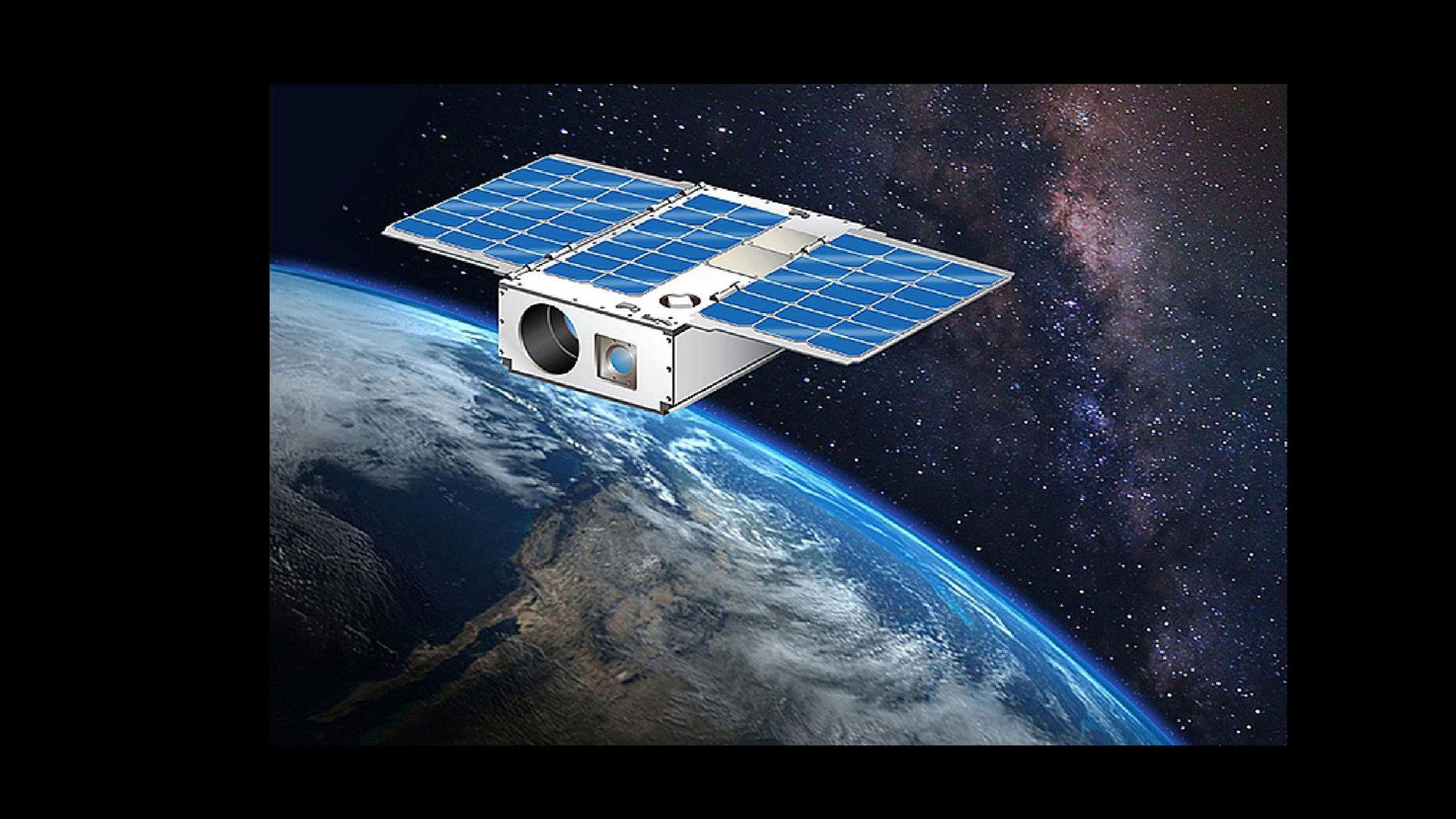ASTERIA (Arcsecond Space Telescope Enabling Research in Astrophysics) was a technology demonstration and opportunistic science mission to conduct astrophysical measurements using a CubeSat. ASTERIA was the first JPL-built CubeSat to have been successfully operated in space. Originally envisioned as a project for training early career scientists and engineers, ASTERIA's technical goal was to achieve arcsecond-level line-of-sight pointing error and highly stable focal plane temperature control. These technologies are important for precision photometry, i.e., the measurement of stellar brightness over time. Precision photometry, in turn, provides a way to study stellar activity, transiting exoplanets, and other astrophysical phenomena.
ASTERIA was a 6U CubeSat (roughly 10 x 20 x 30 cm, 10 kg) that operated in low-Earth orbit. The payload consisted of a lens and baffle assembly, a CMOS imager, and a two-axis piezoelectric positioning stage on which the focal plane was mounted. A set of commercial reaction wheels provided coarse attitude control. Fine pointing control was achieved by tracking a set of guide stars on the CMOS sensor and moving the piezoelectric stage to compensate for residual pointing errors. Precision thermal control was achieved by isolating the payload from the spacecraft bus, passively cooling the detector, and using trim heaters to perform small temperature corrections over the course of an observation.
- Principal Investigator (Advisory): Sara Seager (MIT)
- Program Managers: Lorraine Fesq (Extended Mission III), Sarah Gavit (Prime & Extended Missions I-II)
- Project Managers: Lorraine Fesq (Extended Mission III), Amanda Donner (Extended Missions I-II), Matthew W. Smith (Prime Mission:Tech Demo), Joel Krajewski (Prime Mission:Checkout), Mary White (Spacecraft Development)
- Mission Manager: Kyle Hughes (Extended Mission III), Amanda Donner (Extended Missions I-II), Matthew W. Smith (Prime Mission)
Mission Status
In June 2017, the flight spacecraft was delivered for integration into the Nanoracks CubeSat Deployer. ASTERIA was launched to the International Space Station (ISS) with the SpaceX Falcon-9 Commercial Resupply Services 12 (CRS-12) mission on August 14, 2017. The spacecraft was deployed from the ISS on November 20, 2017 to begin the 90-day ASTERIA technology demonstration mission.
As of February 2018, ASTERIA had met its primary mission requirements by demonstrating pointing stability better than 0.5 arcseconds RMS over 20 minutes and pointing repeatability of 1 milliarcsecond RMS from orbit-to-orbit. The mission also demonstrated thermal stability of +/-0.01 K as measured at a single point on the focal plane.
Since completing its primary mission objectives, ASTERIA continued operating through three mission extensions until loss of contact. The last successful communication with ASTERIA occurred on December 5, 2019. Mission operators continued attempts at contacting the spacecraft through the end of February 2020, at which point the end of mission was declared. During these mission extensions, the spacecraft was used as an in-space platform to test various capabilities that aim to make CubeSats more autonomous, some of which are based on artificial intelligence programs. ASTERIA also made opportunistic observations of the Earth, a comet, Vesta, Uranus, other spacecraft in geo-synchronous orbit, and stars that might host transiting exoplanets.
Background
The ASTERIA project was a collaboration with the Massachusetts Institute of Technology (MIT) and was funded at JPL through the Phaeton Program for training early career employees. JPL was responsible for overall project management, systems engineering, spacecraft implementation, integration and test, and mission operations. The main spacecraft subsystem suppliers were Blue Canyon Technologies (Attitude Control Subsystem), Vulcan Wireless (Telecommunications Subsystem), MMA Design LLC (Solar Arrays), GomSpace (Power Subsystem and Batteries), Spaceflight Industries (Flight Computer), Ecliptic Enterprises (Focal Plane), Physik Instrumente (Piezo Stage), and Thermotive (Thermal Hardware). Morehead State University (MSU) provided spacecraft tracking, telemetry, and control services to the Mission Operations team at JPL. MIT and the University of Bern (Switzerland) performed target selection and analysis of stellar photometry data. ASTERIA traced its origins back to the ExoplanetSat concept developed at MIT in collaboration with Draper Laboratory (ScD Thesis by C. Pong, US Patent by M. W. Smith, C. Pong, et al.).
Extended Mission Overview
References


